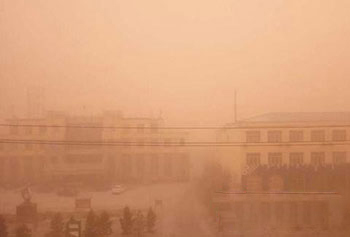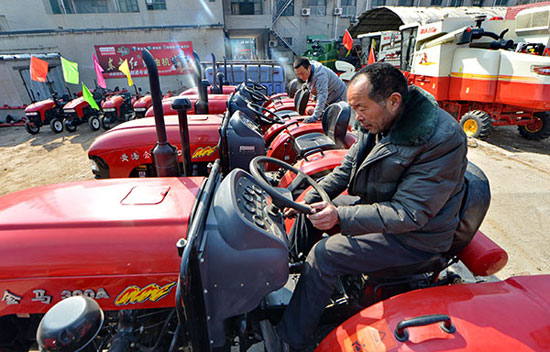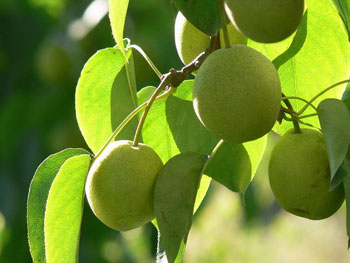In the south, it may be difficult for farmers to suffer from cold, low temperature and rainstorm in late spring.
Original title: The local temperature in the central and eastern parts of the next week will exceed 10℃ in the south or meet the cold in spring
According to China Weather Network news, Next week (March 8-11), There will be a strong cold air attack most of our country, The central and eastern have strong cooling, Some areas cooling range can reach 10-12℃, The south or now "Late spring cold", Jiangnan local minimum temperature will be close to the historical extreme. This cold air will reverse the current pattern of higher temperatures, and the cold will strike back.

On March 4, Inner Mongolia encountered strong dust and the sky was dim. Photographe: Liang Shuai
At 8:00 a.m. on the 5th, the snow thickness in Daxinganling reached 9.8 cm. (Photo source: Daxinganling Meteorological Observatory)
The cold air that began to affect China on the 3rd is nearing the end. Influenced by this cold air, the northern region has experienced the largest round of dust weather since this year, and the northeast region has experienced heavy snowfall. As the cold air moves eastward and southward, the temperature in the middle and lower reaches of the Yangtze River will drop obviously today. However, due to the weak strength of this cold air, the temperature fluctuation brought by this cold air is not large for most areas. The overall temperature is still relatively high. The middle and lower reaches of the Yangtze River and Jiangnan are still warm as April.
Next week, there will be a strong cold air attack on most areas of our country, compared with before, this cold air strength is stronger, will bring severe cooling to a large area of our country, reverse the current pattern of high temperature, cold reverse attack. The south will be more affected, with significant cooling and large-scale rain and snow, more or "late spring cold", and the lowest temperature in Jiangnan will be close to the historical extreme.
National minimum temperature forecast map (March 8 - 11)
The central meteorological observatory predicts that the temperature in the east of northwest China, north China, south of northeast China, Huanghuai and other places will drop by 6~8℃ from August to 11, among which Beijing will be affected by strong cold air, the temperature will drop by 6~8℃ from August to 10, and the lowest temperature at night will drop to about minus 4℃. Cold wave weather will appear in the south, among which Jianghan, Jiangnan, northern South China and other places can cool down to 10~12℃; around 11 days, the lowest temperature in Jiangnan and Guizhou will drop to about 0℃, and the lowest temperature in northern South China will drop to 2~4℃; the lowest temperature in Jiangnan will be close to the extreme low value (-1℃) of the same period in history (mid-March).
National precipitation forecast map (March 7 - 10)
At the same time, Jiangnan, South China and other places will have obvious rainfall, the middle and lower reaches of the Yangtze River will also appear rain to sleet. The Central Meteorological Observatory predicts that from 7 to 10, there will be moderate to heavy rain (15~30 mm) in the south of Jianghuai, south of Jianghan, Jiangnan and northern South China, and rainstorm (50~80 mm) in Jiangnan; rain will turn to sleet in parts of the middle and lower reaches of the Yangtze River around 10 days ago.
In addition, dust storms will occur in parts of Northwest China and Inner Mongolia. The Central Meteorological Observatory predicts that from August to September, there will be 4~6 winds in most parts of Northwest China and North China, and gusts can reach about 7, among which Beijing has 4 northerly winds and gusts of 6~7;** South Xinjiang Basin, western Qinghai, western Gansu, northern Ningxia and western Inner Mongolia will have floating dust or blowing sand weather, among which there will be sandstorms in southern Xinjiang Basin.
Influenced by strong cold air, the daily minimum temperature in some areas of Jiangnan may drop to about 0℃, and the daily average temperature in the north of South China may drop below 12℃, which is unfavorable to rape growth or rice seedling raising; field management shall be strengthened to prevent low temperature and freezing injury. In addition, measures such as strengthening facilities and greenhouses should be taken to prevent adverse effects of strong winds.
At the same time, it is also necessary to prevent the adverse impact of rain and snow weather on transportation and urban operation in the central and eastern regions, and the geological disasters that may be caused by local heavy rainfall in the south of the Yangtze River in particular.
In addition, attention should be paid to the adverse effects of strong wind and dust weather on human health, facility agriculture, animal husbandry and transportation in northwest China and other places.
Related
- A course of planting techniques and methods on how to grow carrots
- How to plant the latest tulips?
- Is it better to pick tea in the morning or in the afternoon? When is the best time for tea to be picked? what is the third or fifth tea?
- Launch Yuanxiao Happy combination Haocha + Tea Yuan healthy Taste
- Penghu Tourism "Fireworks 20 Parade with You"
- 2022 West Lake Happiness holds "Digital Revitalization Voucher" and draws iphone13 and laptop.
- Banqiao Fuzhou social houses are designed to change start-up combined with police elimination to create a safe and livable environment
- The convenient measure of "mechanical weeding" in Xinbei has been abused and the Agriculture Bureau has imposed heavy penalties on the illegal land consolidation.
- Changgeng University Joins Hands with Four Memory Factories to Rescue Memory Talent Shortage
- The list of Taiwan's top 100 MVP managers is listed by the Director-General of the Farmers' Association of Sanxia District.



